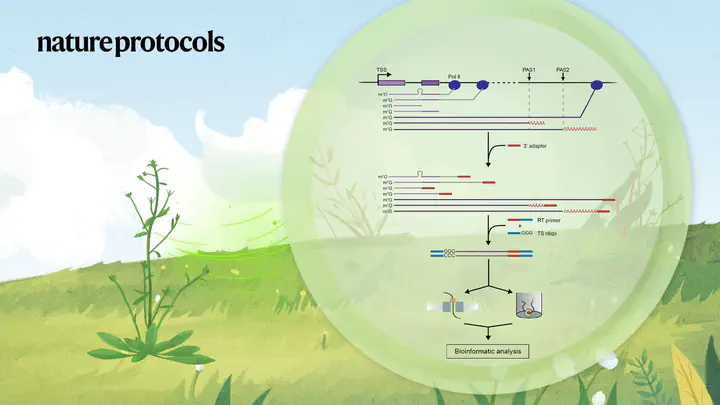FLEP-seq: simultaneous detection of RNA polymerase II position, splicing status, polyadenylation site and poly (A) tail length at genome-wide scale by single-molecule nascent RNA sequencing

Abstract
Elongation, splicing and polyadenylation are fundamental steps of transcription, and studying their coordination requires simultaneous monitoring of these dynamic processes on one transcript. We recently developed a full-length nascent RNA sequencing method in the model plant Arabidopsis that simultaneously detects RNA polymerase II position, splicing status, polyadenylation site and poly(A) tail length at genome-wide scale. This method allows calculation of the kinetics of cotranscriptional splicing and detects polyadenylated transcripts with unspliced introns retained at specific positions posttranscriptionally. Here we describe a detailed protocol for this method called FLEP-seq (full-length elongating and polyadenylated RNA sequencing) that is applicable to plants. Library production requires as little as one nanogram of nascent RNA (after rRNA/tRNA removal), and either Nanopore or PacBio platforms can be used for sequencing. We also provide a complete bioinformatic pipeline from raw data processing to downstream analysis. The minimum time required for FLEP-seq, including RNA extraction and library preparation, is 36 h. The subsequent long-read sequencing and initial data analysis ranges between 31 and 40 h, depending on the sequencing platform.